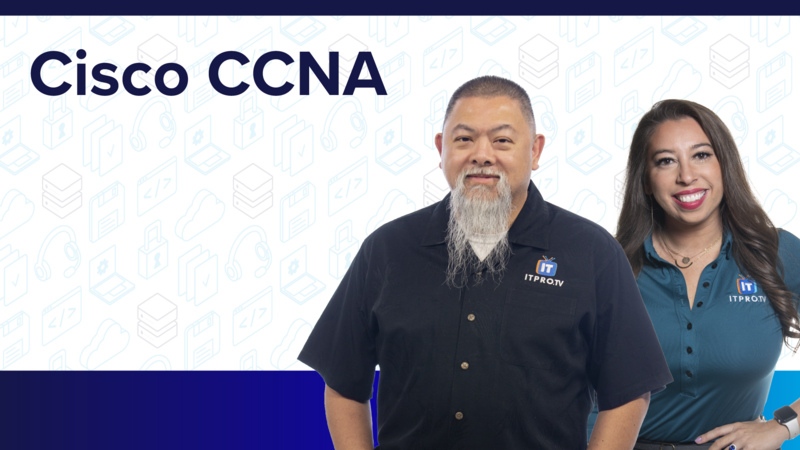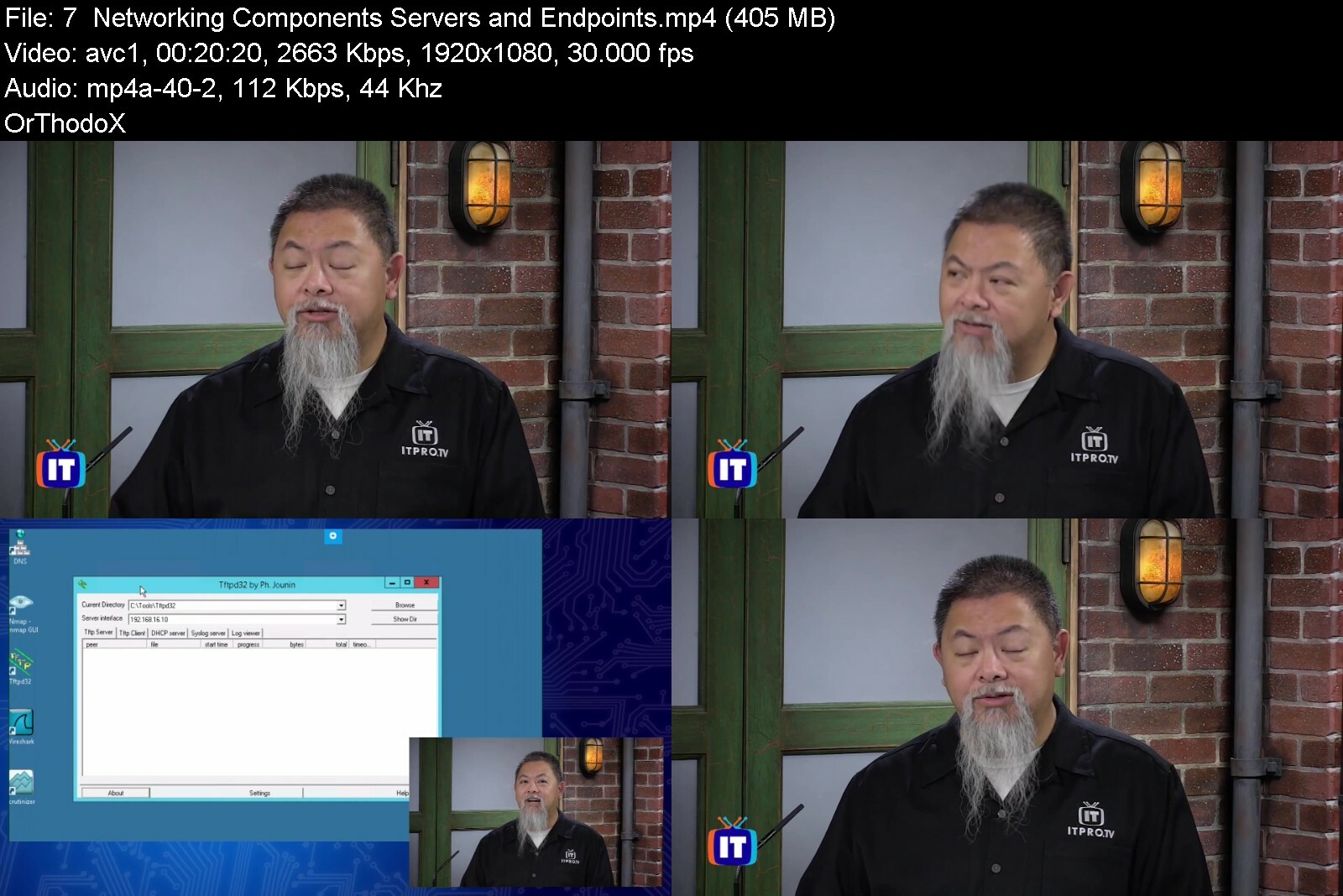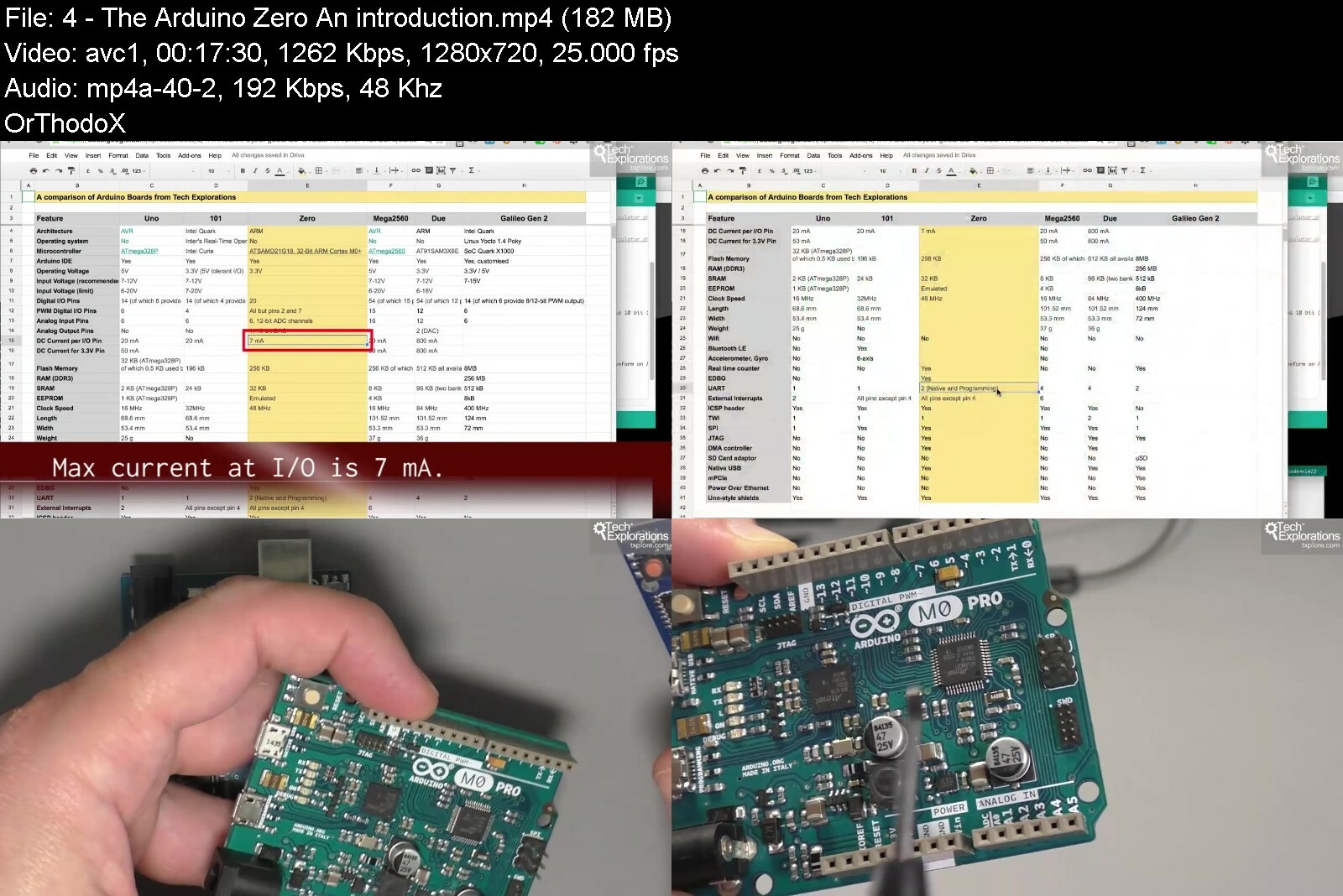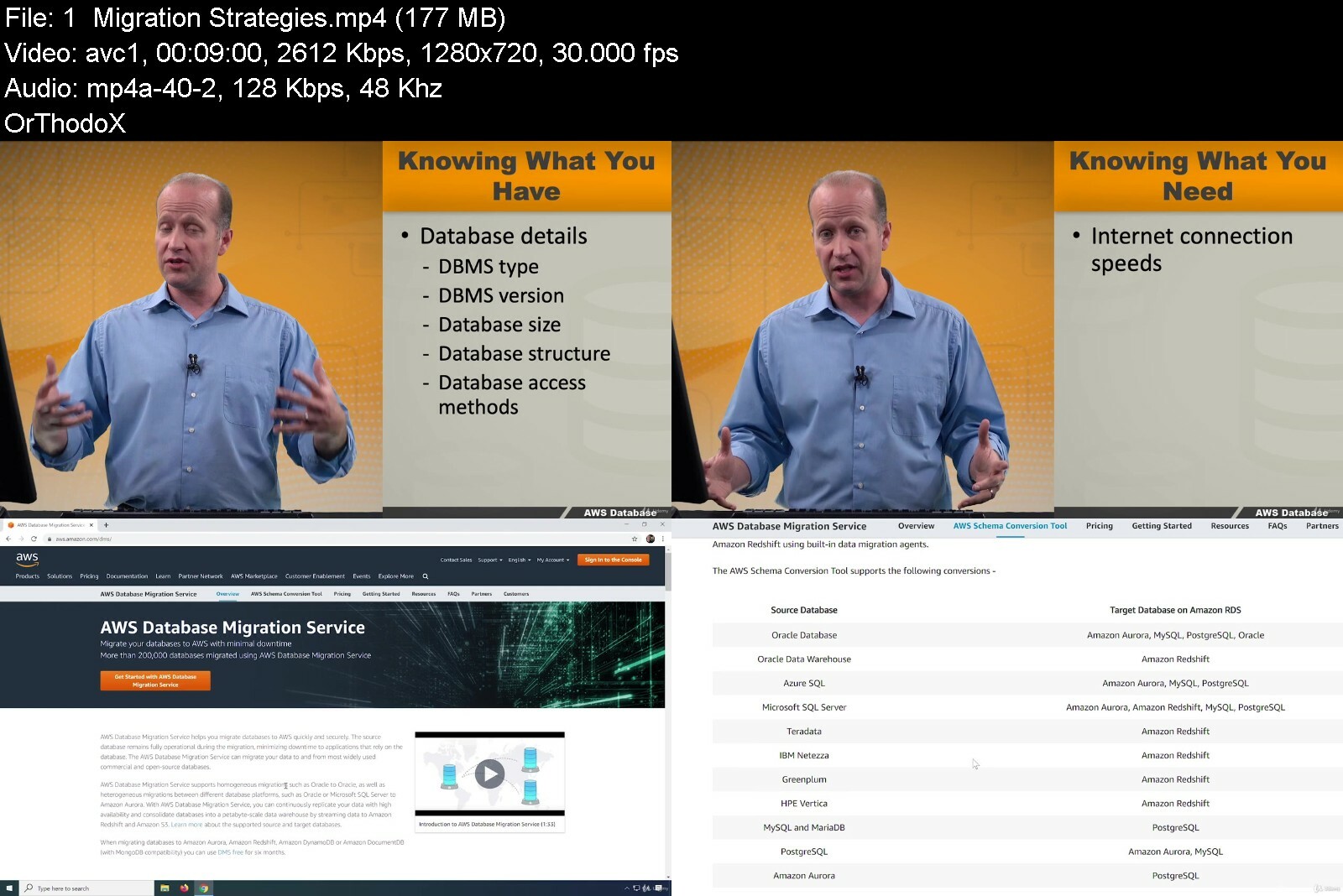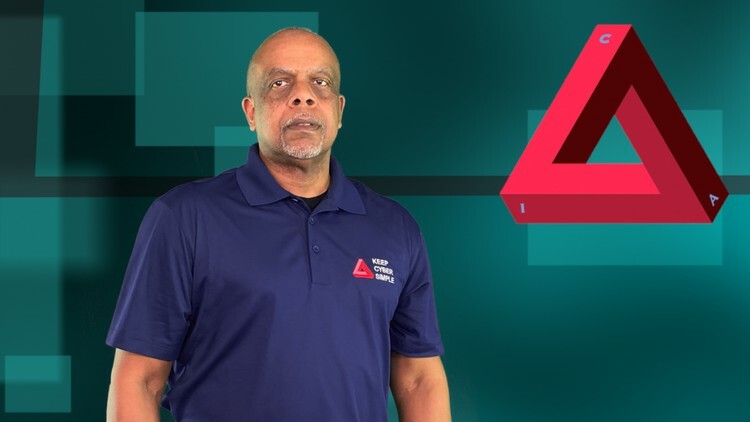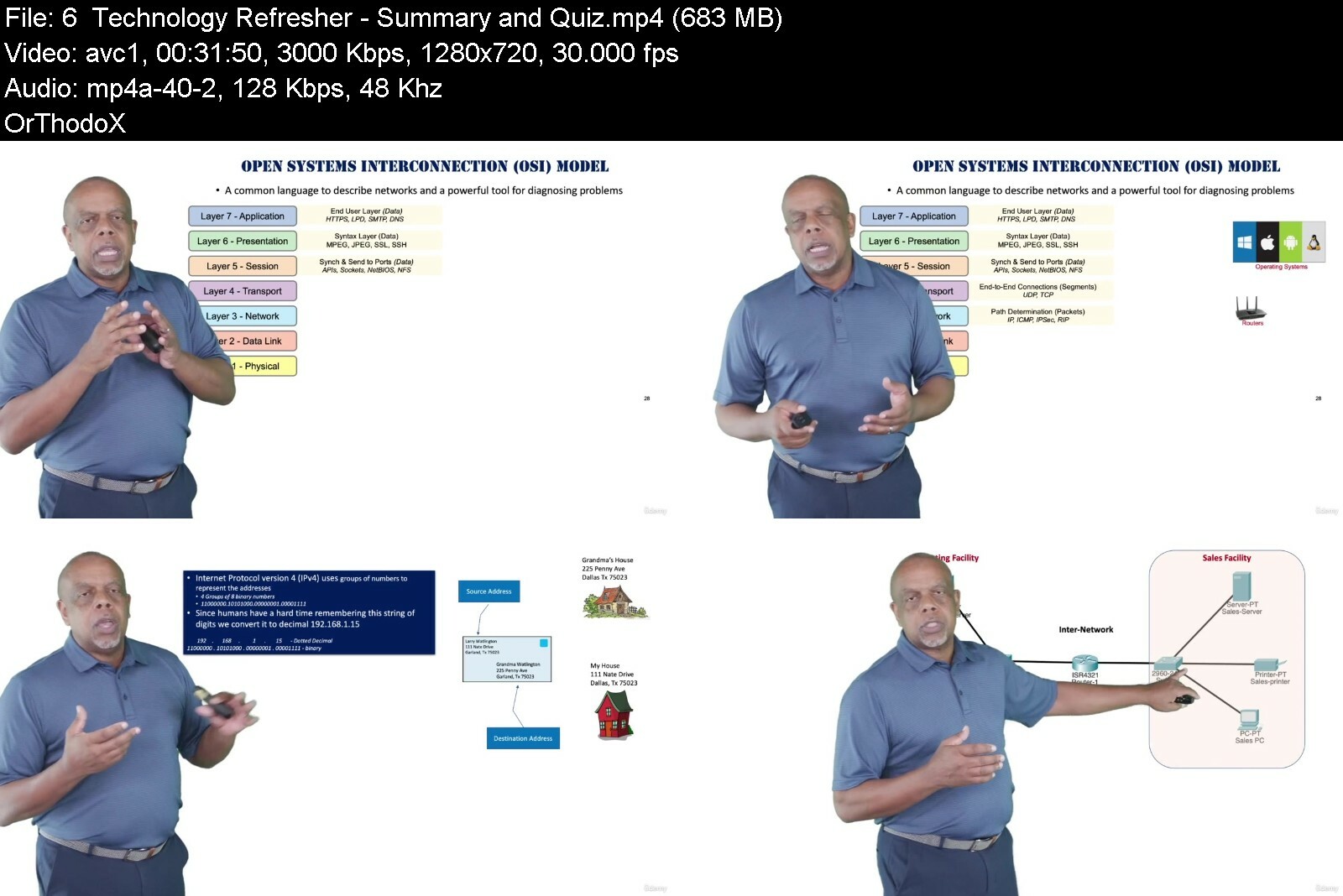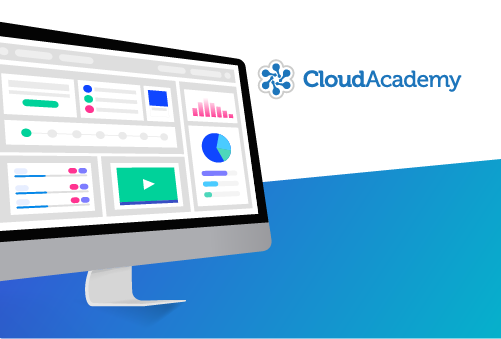TOTAL: AWS Certified Solutions Architect Associate (SAA-C03)
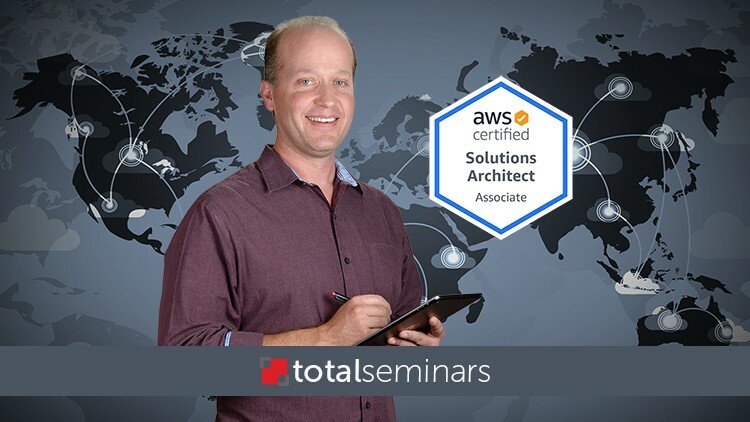
TOTAL: AWS Certified Solutions Architect Associate (SAA-C03)
Last updated 2/2023
Created by Total Seminars • Over 1 Million Enrollments,Tom Carpenter
MP4 | Video: h264, 1280x720 | Audio: AAC, 44.1 KHz, 2 Ch
Genre: eLearning | Language: English + srt | Duration: 188 Lectures ( 23h 27m ) | Size: 15.9 GB
BEST VALUE: Pass the AWS Certified Solutions Architect - Associate SAA-C03 exam + AWS Essentials & 2 FREE practice exams
What you'll learn
This course covers all the basics of AWS, from understanding the cloud and setting up a FREE AWS account to learning how to run an instance.
A 3-for-1* course! You'll gain access to both the AWS Essentials & AWS Cert. Solutions Architect - Assoc (SAA-C03) certification prep course. + 2 practice tests
Learn about the AWS Management Console, S3 buckets, EC2 instances, database services, security in the cloud, and the costs associated with AWS.
Prepare for the AWS Certified Solutions Architect - Associate (SAA-C03) exam with 2 FREE Practice Exams.
Over 21 hours of content and 20 downloadable resources, including PDF notes on every chapter.
Requirements
There are absolutely NO requirements for this course. I'll walk you through all the basics in the AWS Essentials episodes. If you like what you learn, continue on with the AWS Certified Solutions Architect - Associate (SAA-C03) series.
Description
Mike Meyers and the Total Seminars Team bring you this AWS Essentials & Solutions Architect course with your instructor, Tom Carpenter.3-for-1 course! This course includes:· AWS Technical Essentials (learn the basics of AWS)· AWS Certified Solutions Architect - Associate (prepare to pass the SAA-C03 exam)· 2 BONUS practice tests from our AWS Solutions Architect - Associate: Practice Tests courseThis is NOT a boring voice over PowerPoint course. Tom speaks to you and presents the material in an engaging interactive style that will keep you interested and make it easier to understand. Check out the free sample lectures and you will see the difference.Are you looking to learn more about AWS and what it can do for you or your company? Maybe you've heard this buzzword, but don't know what it means to take your business and network solutions into the AWS cloud. Or, perhaps you're a seasoned network tech looking to become an AWS Certified Solutions Architect Associate.Did you know the average annual salary for AWS Solutions Architect certification holders is $167,366 per year*? There aren't enough AWS-trained people in the job market, so the demand for AWS Solutions Architect trained employees is high right now. Start your next career today with this course.Take a look at these student reviews:***** "This was a really good learning process, the concepts taught in the course were 100% in line with working hands-on with AWS. Thank you, Tom Carpenter, for doing a wonderful job!" - Anirban De***** "I love Tom's enthusiasm for the cloud! He has an ability to explain the concepts in way that anyone, even a child, could understand. I hope Total Seminars continues to make cloud courses! Thanks!!" - Tracey Osborn***** "Thank you Tom. This course really helped me a lot in successfully clearing the AWS CSA - Associate certificate with a good score. The way you explained things helped in memorizing the content and recalling it during the exam! - Vibhor Agarwal***** "Thank you very much for the easy to understand explanation and exam tips, was able to pass successfully with your guidance!" - Ramakrishnan VenkataramaniNot sure which AWS course to choose on Udemy? Check out our features and benefits:FEATURES & BENEFITS· 3-for-1 course! This course includes AWS Technical Essentials, AWS Certified Solutions Architect - Associate, PLUS 2 free practice tests· Over 18 hours of content· 20 downloadable resources, including PDF notes on every chapter· 2 FREE practice tests (from our AWS Solutions Architect-Associate: Practice Test course) at the end of the course, each 65 questions and the domains are weighted just like the real exam· End-of-chapter quizzes to test your knowledge· Q&A section where you can have your questions answered· 30-day money-back guarantee· Lifetime access· Certificate of completionThe AWS Technical Essentials course is offered on AWS's website, however you would pay a whopping $675 on their website. AWS also offers a 3-day virtual classroom training for the AWS Certified Solutions Architect - Associate exam, however it costs $2,095! Get both of these courses right here for a HUGE DISCOUNT.WHAT'S COVERED?The AWS Technical Essentials course is the first 14 episodes and mirrors the class AWS offers online. The Technical Essentials course isn't a certification exam prep course, and doesn't have exam domains, however here's a list of what's covered:· Terminology and concepts related to the AWS platform· How to navigate the AWS Management Console· Key concepts of AWS security measures and AWS Identity and Access Management (IAM)· Foundational services· Amazon Elastic Compute Cloud (Amazon EC2), Amazon Virtual Private Cloud (Amazon VPC), Amazon Simple Storage Service (Amazon S3), and Amazon Elastic Block Store (Amazon EBS)· Database services· Amazon DynamoDB and Amazon Relational Database Service (Amazon RDS)· Management services· AWS Auto Scaling, Amazon CloudWatch, Elastic Load Balancing (ELB), and AWS Trusted AdvisorThe AWS Certified Solutions Architect - Associate SAA-C03 exam domains covered are:· Domain 1: Design Secure Architectures (30%)· Domain 2: Design Resilient Architectures (26%)· Domain 3: Design High-Performing Architectures (24%)· Domain 4: Design Cost-Optimized Architectures (20%)WHERE SHOULD I BEGIN IN THIS COURSE?BEGINNERS· Start with Part 1 - AWS Essentials· If you're totally new to AWS and looking for a crash course in the foundations, I would recommend starting at the beginning of this course with Essentials Chapter 1 - AWS Foundations and Services and watching the first 12 episodes.· Once you've got the basics down, keep on the learning path and start the AWS Solutions Architect - Associate video course, which begins at Chapter 1 - AWS Cloud Services Overview.EXPERTS· Start with Part 2 - AWS Solutions Architect - Associate· Maybe you're a seasoned network tech, or if you're already familiar with the AWS foundations, you might jump straight into the AWS Solutions Architect - Associate videos, which begin at Chapter 1 - AWS Cloud Services Overview.· If you need a refresher at any time, feel free to go back to the beginning of the course and take a look at the AWS Essentials videos, which begin with Essentials Chapter 1 - AWS Foundations and Services.IS THE AWS CERTIFIED SOLUTIONS ARCHITECT - ASSOCIATE EXAM RIGHT FOR YOU?The AWS Solutions Architect Associate certification is ideal for those working in roles such as:· Solutions Architect· Development Operations (DevOps) Engineer· Software Engineer· Site Reliability Engineer (SRE)· Data Engineer· Senior Solutions ArchitectTom Carpenter is the Chief Technical Officer at CWNP (Certified Wireless Network Professionals). He's been in the IT industry for 25+ years, written over 20 books on IT subjects, and is also heavily involved in objectives development and exam creation in the certification industry. Tom uses AWS daily to run several businesses websites and operate test labs used for content creation and management, among other things. Tom's teaching style is casual; he wants you to have fun while you learn practical applications of AWS. Join our class now and let us know how you plan to use AWS in your personal or professional life!
Who this course is for
This course is intended for anyone who's ever heard the word "AWS" and wants to know more.
This course is also great for anyone looking to move their business solutions to the AWS cloud, and learn how AWS can help manage your costs, security, storage, and computational needs.
The AWS Certified Solutions Architect - Associate (SAA-C03) course will go into greater detail and teach you what you need to pass the AWS Certified Solutions Architect - Associate (SAA-C03) certification exam.
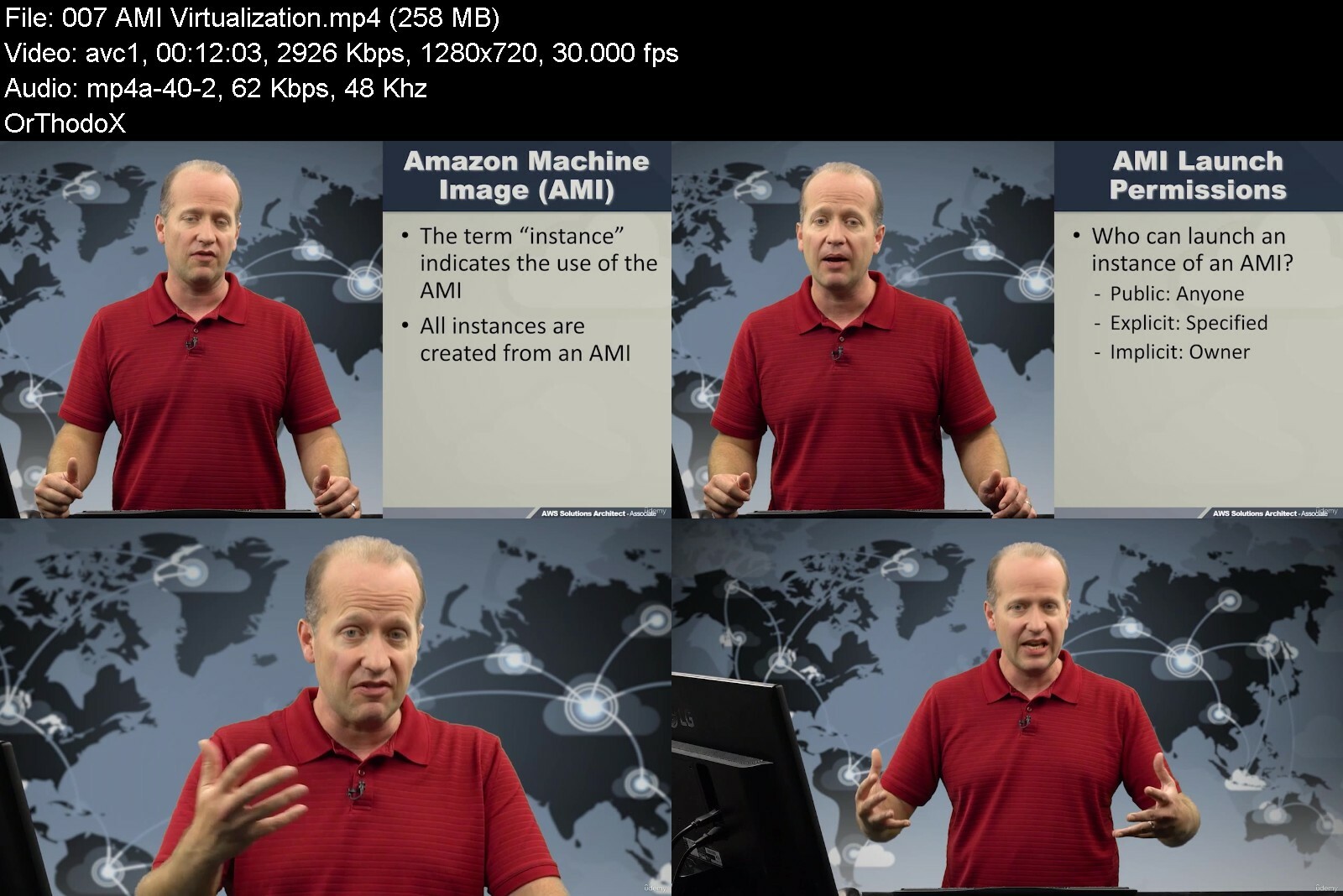

TOTAL: AWS Certified Solutions Architect Associate (SAA-C03)
Last updated 2/2023
Created by Total Seminars • Over 1 Million Enrollments,Tom Carpenter
MP4 | Video: h264, 1280x720 | Audio: AAC, 44.1 KHz, 2 Ch
Genre: eLearning | Language: English + srt | Duration: 188 Lectures ( 23h 27m ) | Size: 15.9 GB
BEST VALUE: Pass the AWS Certified Solutions Architect - Associate SAA-C03 exam + AWS Essentials & 2 FREE practice exams
What you'll learn
This course covers all the basics of AWS, from understanding the cloud and setting up a FREE AWS account to learning how to run an instance.
A 3-for-1* course! You'll gain access to both the AWS Essentials & AWS Cert. Solutions Architect - Assoc (SAA-C03) certification prep course. + 2 practice tests
Learn about the AWS Management Console, S3 buckets, EC2 instances, database services, security in the cloud, and the costs associated with AWS.
Prepare for the AWS Certified Solutions Architect - Associate (SAA-C03) exam with 2 FREE Practice Exams.
Over 21 hours of content and 20 downloadable resources, including PDF notes on every chapter.
Requirements
There are absolutely NO requirements for this course. I'll walk you through all the basics in the AWS Essentials episodes. If you like what you learn, continue on with the AWS Certified Solutions Architect - Associate (SAA-C03) series.
Description
Mike Meyers and the Total Seminars Team bring you this AWS Essentials & Solutions Architect course with your instructor, Tom Carpenter.3-for-1 course! This course includes:· AWS Technical Essentials (learn the basics of AWS)· AWS Certified Solutions Architect - Associate (prepare to pass the SAA-C03 exam)· 2 BONUS practice tests from our AWS Solutions Architect - Associate: Practice Tests courseThis is NOT a boring voice over PowerPoint course. Tom speaks to you and presents the material in an engaging interactive style that will keep you interested and make it easier to understand. Check out the free sample lectures and you will see the difference.Are you looking to learn more about AWS and what it can do for you or your company? Maybe you've heard this buzzword, but don't know what it means to take your business and network solutions into the AWS cloud. Or, perhaps you're a seasoned network tech looking to become an AWS Certified Solutions Architect Associate.Did you know the average annual salary for AWS Solutions Architect certification holders is $167,366 per year*? There aren't enough AWS-trained people in the job market, so the demand for AWS Solutions Architect trained employees is high right now. Start your next career today with this course.Take a look at these student reviews:***** "This was a really good learning process, the concepts taught in the course were 100% in line with working hands-on with AWS. Thank you, Tom Carpenter, for doing a wonderful job!" - Anirban De***** "I love Tom's enthusiasm for the cloud! He has an ability to explain the concepts in way that anyone, even a child, could understand. I hope Total Seminars continues to make cloud courses! Thanks!!" - Tracey Osborn***** "Thank you Tom. This course really helped me a lot in successfully clearing the AWS CSA - Associate certificate with a good score. The way you explained things helped in memorizing the content and recalling it during the exam! - Vibhor Agarwal***** "Thank you very much for the easy to understand explanation and exam tips, was able to pass successfully with your guidance!" - Ramakrishnan VenkataramaniNot sure which AWS course to choose on Udemy? Check out our features and benefits:FEATURES & BENEFITS· 3-for-1 course! This course includes AWS Technical Essentials, AWS Certified Solutions Architect - Associate, PLUS 2 free practice tests· Over 18 hours of content· 20 downloadable resources, including PDF notes on every chapter· 2 FREE practice tests (from our AWS Solutions Architect-Associate: Practice Test course) at the end of the course, each 65 questions and the domains are weighted just like the real exam· End-of-chapter quizzes to test your knowledge· Q&A section where you can have your questions answered· 30-day money-back guarantee· Lifetime access· Certificate of completionThe AWS Technical Essentials course is offered on AWS's website, however you would pay a whopping $675 on their website. AWS also offers a 3-day virtual classroom training for the AWS Certified Solutions Architect - Associate exam, however it costs $2,095! Get both of these courses right here for a HUGE DISCOUNT.WHAT'S COVERED?The AWS Technical Essentials course is the first 14 episodes and mirrors the class AWS offers online. The Technical Essentials course isn't a certification exam prep course, and doesn't have exam domains, however here's a list of what's covered:· Terminology and concepts related to the AWS platform· How to navigate the AWS Management Console· Key concepts of AWS security measures and AWS Identity and Access Management (IAM)· Foundational services· Amazon Elastic Compute Cloud (Amazon EC2), Amazon Virtual Private Cloud (Amazon VPC), Amazon Simple Storage Service (Amazon S3), and Amazon Elastic Block Store (Amazon EBS)· Database services· Amazon DynamoDB and Amazon Relational Database Service (Amazon RDS)· Management services· AWS Auto Scaling, Amazon CloudWatch, Elastic Load Balancing (ELB), and AWS Trusted AdvisorThe AWS Certified Solutions Architect - Associate SAA-C03 exam domains covered are:· Domain 1: Design Secure Architectures (30%)· Domain 2: Design Resilient Architectures (26%)· Domain 3: Design High-Performing Architectures (24%)· Domain 4: Design Cost-Optimized Architectures (20%)WHERE SHOULD I BEGIN IN THIS COURSE?BEGINNERS· Start with Part 1 - AWS Essentials· If you're totally new to AWS and looking for a crash course in the foundations, I would recommend starting at the beginning of this course with Essentials Chapter 1 - AWS Foundations and Services and watching the first 12 episodes.· Once you've got the basics down, keep on the learning path and start the AWS Solutions Architect - Associate video course, which begins at Chapter 1 - AWS Cloud Services Overview.EXPERTS· Start with Part 2 - AWS Solutions Architect - Associate· Maybe you're a seasoned network tech, or if you're already familiar with the AWS foundations, you might jump straight into the AWS Solutions Architect - Associate videos, which begin at Chapter 1 - AWS Cloud Services Overview.· If you need a refresher at any time, feel free to go back to the beginning of the course and take a look at the AWS Essentials videos, which begin with Essentials Chapter 1 - AWS Foundations and Services.IS THE AWS CERTIFIED SOLUTIONS ARCHITECT - ASSOCIATE EXAM RIGHT FOR YOU?The AWS Solutions Architect Associate certification is ideal for those working in roles such as:· Solutions Architect· Development Operations (DevOps) Engineer· Software Engineer· Site Reliability Engineer (SRE)· Data Engineer· Senior Solutions ArchitectTom Carpenter is the Chief Technical Officer at CWNP (Certified Wireless Network Professionals). He's been in the IT industry for 25+ years, written over 20 books on IT subjects, and is also heavily involved in objectives development and exam creation in the certification industry. Tom uses AWS daily to run several businesses websites and operate test labs used for content creation and management, among other things. Tom's teaching style is casual; he wants you to have fun while you learn practical applications of AWS. Join our class now and let us know how you plan to use AWS in your personal or professional life!
Who this course is for
This course is intended for anyone who's ever heard the word "AWS" and wants to know more.
This course is also great for anyone looking to move their business solutions to the AWS cloud, and learn how AWS can help manage your costs, security, storage, and computational needs.
The AWS Certified Solutions Architect - Associate (SAA-C03) course will go into greater detail and teach you what you need to pass the AWS Certified Solutions Architect - Associate (SAA-C03) certification exam.












